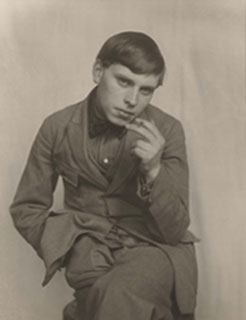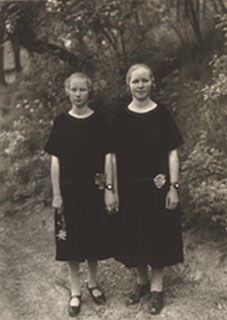
 
A new exhibition, The photographs of August Sander includes 155 photographs from The J. Paul Getty Museum, which has the most substantial collection of Sander photographs outside of Germany (approximately 1,200). This is the first time a Sander exhibition has been seen in Australia. Virginia Heckert, Associate Curator of Photography at the J. Paul Getty Museum in Los Angeles will be visiting Sydney for the opening of the exhibition. Virginia co-curated the exhibition with senior curator of photography at the Art Gallery of New South Wales, Judy Annear. Virginia will be available for interviews. The exhibition will be opened by Bill Henson. ‘Photography is a recreation of nature, all visible forms appear in it exactly reproduced,’ wrote August Sander, whose belief in his own objectivity as well as that of the camera appears never to have wavered during his lifetime (1876–1964). Sander photographed ordinary people — his own family, rural people, children, workers, artists, the unemployed — and he was as likely to photograph them formally as ‘between’ poses, that is, both when they bore specific attributes signifying who they were or what they did and when they were relaxed in their environs. His use of a large-format camera mounted on a tripod, both in the studio and outdoors, tended to mitigate against spontaneity. Sander’s interest was to produce a definitive ‘atlas’ of the German people. The portfolios he developed included farmers, skilled tradesmen, women, classes and professions, artists and the city. Although Sander never completed his project, he left about 700 photographs associated with the portfolios. Given his humanist beliefs and the diversity of the people he chose to photograph, it is speculative as to whether his life’s work could have ever been finished. This exhibition also includes photographs of the landscape surrounding Cologne where his subjects lived, the photographs of the interior of his home and studio in Cologne, a number of experiments with photographs of facial features, examples of the postcards he produced in his daily work as a commercial photographer and some of his publications. The range of the Getty Museum’s collection enables a broad view of Sander’s work, given the inclusion of iconic photographs such as Country Girls (1925) (where the twinlike nature of the two sisters is as riveting as Diane Arbus’ 1960s photograph of twins) as well as small-scale, informal photographs of children, multi-generational families and sporting groups. His photographs of farming families from the Westerwald were intended to show them as archetypes that would serve as a typology of human character in general, while images such as ‘the people who came to my door’ from the city portfolio bespeak a sensitivity which is unusual in photography at that time. Sander’s images have an appeal that is timeless and universal. Clearly Sander’s understanding of the nature of the camera and of portraiture enabled him to develop a view of the social whole and of its parts that remains unparalleled to this day. For Sander, an understanding of the individual always existed in relation to the group. The important and haunting detail in these photographs arises from the minutiae of gesture, the fold of the hands, the subtlety of the glance. Senior curator photography Judy Annear worked closely with the Getty Museum on the development of the August Sander exhibition while in residence as a Getty scholar from January through March 2007. The exhibition will be accompanied by the J. Paul Getty Museum’s 2000 In Focus book on August Sander as well as texts produced in collaboration with Virginia Heckert, associate curator at the Getty Museum, who is co-curator of the exhibition. The exhibition has been co-organised by the J. Paul Getty Musuem, Los Angeles and the Art Gallery of New South Wales, Sydney. The Art Gallery of New South Wales is the only Australasian venue to show this exhibition. Following its presentation in Sydney, the exhibition will return to the J. Paul Getty Museum, where it will be shown from 6 May to 14 September 2008. Supported by the President’s Council 
|